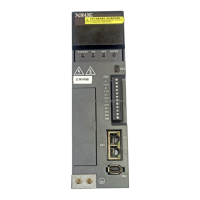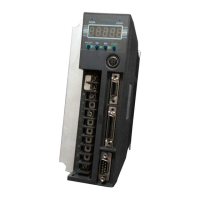30~50 times 200~300 2000~2500 300~400
About 500
More than 50
times
About 200 About 3000
200~300 100~400
Note: the data in this table is the structure of 60/80 motor synchronous belt as an example.
5-4.DS5 adaptive mode
When the responsiveness requirement is not high, it can be used quickly only by setting functional parameters
such as gear ratio and enable, so as to save servo adjustment time. Adaptive function refers to the function that
can obtain stable response through automatic adjustment regardless of machine type and load fluctuation.
Servo on automatically starts adjustment.
5-4-1.Adaptive mode parameter adjustment effect
parameter
Small inertia /
large inertia
Name
Default
value
setting
range
Effect
P2-05/P6-05
Adaptive speed
loop gain
400/200
200~400
Reducing can improve the capacity of
belt inertia, but it will reduce the
responsiveness and have a great impact
on the responsiveness
P2-07/P6-07
Adaptive load
inertia ratio
0/50
0~200
The capacity with inertia can be greatly
improved by increasing, and the
responsiveness will not be affected, and it is
easy to oscillate if it is too large
P2-08/P6-08
Adaptive speed
observer gain
60/40
30~60
Reducing P2-08 and increasing P2-12
can greatly improve the capacity with
inertia, but it will reduce the
responsiveness and have a great impact
on the responsiveness
P2-12/P6-12
Adaptive mode
stable maximum
inertia ratio
30/50
30~60
P2-10
Integral time
coefficient of
adaptive mode
speed loop
500
200~max
Adjust as needed, generally increase
P2-11 Adaptive mode
position loop
100
50~200
Adjust as needed to increase the
acceleration response and reduce the
60

